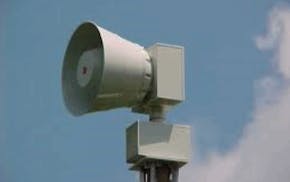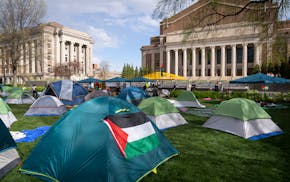Where streetcars once rolled along Robert Street, the automobile now rules.
But the old-fashioned mode of transportation is gaining momentum once again in northern Dakota County as one of the many alternatives -- buses and light rail are among the others -- that will be studied as planners ponder transit between St. Paul's Union Depot and Rosemount.
A $1.18 million federal grant, announced just before the holidays, is launching Dakota County into an "alternatives analysis" for the Robert Street corridor.
The analysis, a key step toward regional approval of the project and the chance to net federal funds, will start in the first half of 2011 and take 12 to 18 months. There will multiple opportunities for public input before the conclusion zeroes in on a "locally preferred alternative" for both the type of transit and the routes.
"This gets us to say, 'This is what we're going to be doing. This is the mode and this is the alignment,'" said Sam O'Connell, a transit specialist with Dakota County.
It's a big, symbolic step for transit in northern and central Dakota County, which has so far been second fiddle to the rapid busway project between Lakeville and Bloomington on Cedar Avenue.
As that first project rolls toward construction and a 2012 opening, county officials have been shifting resources to the Robert Street area. There's a new staff person to help with planning, and the levy for the Dakota County Regional Railroad Authority, comprising the county commissioners, grew by $500,000 for 2011 to support Robert Street efforts.
The federal grant was the piece needed to drive the planning forward.
"We are so focused on Cedar, but we've always had these other corridors that we're hoping to move forward," O'Connell said.
Diverse corridor, options
The Robert Street corridor -- an area stretching from St. Paul to Rosemount and Interstate 35E to the Mississippi River, and including Hwy. 52 as well as Robert Street -- last got a hard look in 2008 when the county did a feasibility study outlining a variety of transit possibilities there.
Among those that made the list of recommendations: a streetcar line along the more urban parts of Robert Street; rapid busways on Robert Street and some big east-to-west routes like Hwy. 110 and Yankee Doodle Road; express bus service along Hwy. 55, and a transitway of undetermined mode along some combination of Hwy. 52 and S. Robert Trail.
The alternatives analysis will look at costs and support for all those combinations, plus a light rail scenario -- and a future in which no transit improvements would be made.
"I don't have a definite plan for what I would like to see the Robert Street corridor become, or even a specific alignment," said Dakota County Commissioner Nancy Schouweiler, whose district includes much of the study area. "My interest is in addressing a number of transportation issues in the corridor that I see currently and predict for the future."
Despite the urban northern end, the entire corridor is not built out -- Eagan, Inver Grove Heights and Rosemount have large undeveloped areas -- and the Minnesota Department of Transportation forecasts increased congestion on most of the major roads by 2030.
That may seem a long time from now, but transit planning can take many years.
Although there is Metro Transit bus service in the northern part of the county, the 2008 study found that about one-third of the area did not have access to any transit.
That means the number of transit riders in the corridor is slim.
But Schouweiler said that problem will fix itself: "The development of transit corridors in the metropolitan area has been a true example of 'build it and they will come.'"
High hopes in West St. Paul
To West St. Paul officials, who have been pushing to redevelop Robert Street, that sounds good.
"Robert Street is a very fluid commercial area with a lot happening," said Jim Hartshorn, West St. Paul's community development director. "Anything we can do to really improve Robert Street would be a blessing."
The city is planning its own $7 million project to improve safety along the road and make it more pedestrian friendly, starting in 2014.
Matt Saam, public works and parks director, said, "Whether it be streetcar or bus in the outer lane, we'll make sure our design accommodates that."
Carol Keyes, a West St. Paul resident, small business owner and member of the Northern Dakota County Sierra Club Community said she's eager for more transit. "In an ideal world, I'd love to see light rail," she said, quickly noting that dream may prove less than ideal because of costs, the river crossing on the Hwy. 52 Lafayette Bridge, and the lack of right-of-way in which to put a train. "If you could combine something like a trolley or streetcar with other modes, that might work."
Katie Humphrey • 952-882-9056
![The Minneapolis City skyline including City Hall seen from the back of the U.S. District Court. ] GLEN STUBBE • glen.stubbe@startribune.com Mon](https://arc.stimg.co/startribunemedia/J6LWXC46FXN45KTZZGKPP4WGX4.jpg?h=91&w=145&fit=crop&bg=999&crop=faces)
Lawsuit asks judge to appoint special master to oversee city of Minneapolis violence prevention office
Police ID driver who exited I-94 at 'very high rate of speed' and caused crash that injured 5 in SUV

Siren test fails in Mankato area due to unknown malfunction
